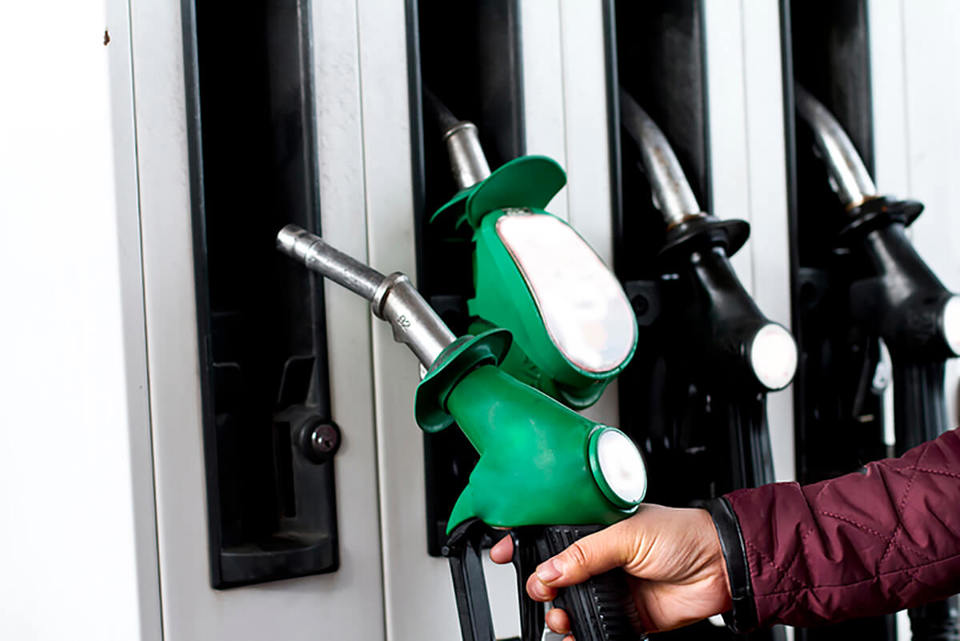Both business and private drivers clocked up more miles this February as they took advantage of fuel prices 22p a litre lower than 12 months ago, according to figures released by HM Revenue and Customs (HMRC).
Total fuel sales were up 3.5% – 133 million litres – on February 2014 with 3.8bn litres of petrol and diesel sold which netted the Treasury £2.24bn in fuel duty revenue – £78m up on the same period last year.
As fuel prices tumbled motorists have been making greater use of their cars, and a growing economy has led to stronger diesel sales due to business dependence on the fuel. This trend was less evident in January when there is traditionally a big dip in fuel sales following the expense of Christmas and a widespread case of the winter blues.
February 2015 saw diesel sales at the fifth highest monthly total since 1990 with total sales of 2.42bn litres at an average retail price of 114.84p; the highest recorded month was November 2014 with sales of 2.5bn litres. Sales of diesel were up 4.5% this February compared with the previous year when the average price of diesel was 136.99p a litre.
Petrol sales were up 2% in the same period but, in contrast to diesel, represented the eighth lowest monthly total since 1990, with 1.48bn litres sold – with an average pump price of 107.97p per litre (February 2014 – 129.57p). The lowest recorded month was March 2013 when just 1.3bn litres of petrol were sold with the average pump price at 138.93p.
The UK currently has 35.9m vehicles of which 29.7m are cars. The car parc is split between one third diesel vehicles and two thirds petrol, with business drivers and commercial vehicles having the dominance of diesel engines. However, diesel’s share on new car sales has been increasing steadily with figures published for 2014 showing more than half of new car sales were of diesel vehicles.
Diesel fuel sales overtook petrol sales in 2007 (diesel 25.5bn v petrol 24bn litres) and have continued to grow to 27.9bn litres in 2014 (petrol – 17.6bn litres).
RAC fuel spokesman Simon Williams said: “We now have evidence of a marked increase in journeys and mileage following the dramatic fall in pump prices brought about by the price of crude oil halving since the middle of last year.
“It’s hard not to think that business is being taken for a ride by the fuel retailers. Traditionally, business runs on diesel, and with sales of diesel at an all-time high the retailers have maintained a higher margin on diesel, perhaps to subsidise petrol sales.
“While clearly some businesses with big, high mileage fleets buy their fuel ahead of time to manage their fuel spends in case of price fluctuations, the prevailing view is that businesses are less price sensitive than consumers which possibly leads retailers to keep margins higher on diesel than petrol.
“In doing so, they appear to be keeping the country’s 20 million private car drivers sweeter. The reality is that pricing of petrol and diesel does vary between retailers with some choosing to more closely reflect the wholesale price of diesel rather than keeping it artificially higher.
“The gap between the wholesale price of diesel and petrol has narrowed to just 1p a litre yet average forecourt prices are currently 6p a litre apart (diesel 118.28p v petrol 112.05p).
“With sales of diesel at such buoyant levels there is scope for a diesel price cut of around 4p a litre to restore some parity to the market and redress many retailers’ decision to subsidise the petrol price with savings in the cost of wholesale diesel.
“There are a number of factors which impact the price of diesel generally serving to make it more expensive at the pump, however the wholesale price of petrol has increased recently due to the start of the driving season in the US.”

















Login to comment
Comments
No comments have been made yet.